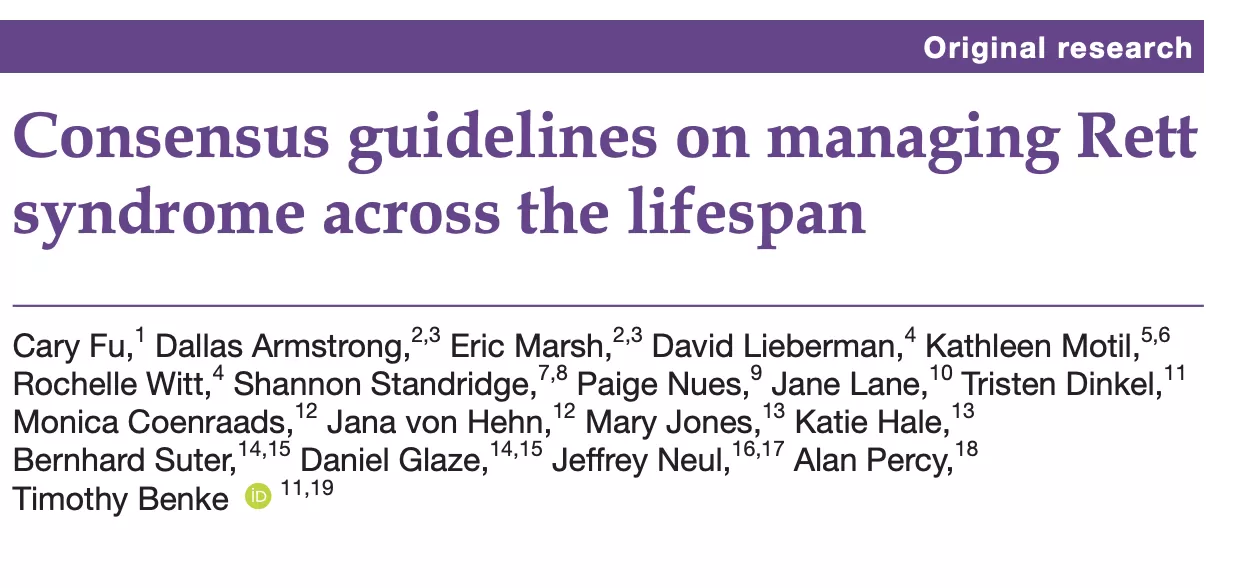First-Ever Rett Clinical Guidelines Help Us Anticipate Health Changes and Needs

If you’re a Rett caregiver or family member, you know how many medical professionals it can take to meet the needs of our loved one. But despite everything we’ve learned about Rett in recent years, there hasn’t been standardized guidance for that growing group of clinicians — until now.
Recently a group of specialists published consensus guidelines on managing Rett from childhood to adulthood. Experts who primarily focus on pediatrics and neurology reviewed existing literature about Rett and then agreed on standard practices for the care of individuals with Rett that will lead to the best outcomes. RSRT’s CEO Monica Coenraads and Jana von Hehn, PhD, RSRT’s senior director of research and clinical strategy are co-authors.
The ability to tap into the deep knowledge of so many experts yielded tremendous value for how we should systematically treat the condition. For example, the guidelines highlight that children with Rett should have an annual echocardiogram (ECG) to look for irregularities in their heartbeat. The guidelines also indicate that there is increased risk of scoliosis after age 6 (with the risk abating after puberty) and that you should initiate a visit for a baseline assessment with an orthopedist and go in for re-observation every six months.
The guidelines lay out who should be managing your loved one’s care and at what point additional symptoms might appear. Although the guidelines were written for clinicians, the information is organized into accessible checklists that you may also find helpful. The guidance begins for primary care providers (page 4) and is followed by recommendations for various specialties and areas of focus, including genetics, neurology, cardiology, respiratory and urology (page 7); gastroenterology and nutrition (page 8); orthopaedics, rehabilitation, skin, endocrine and hospitalisation (page 9); psychological, behavioural, sleep, pain and screenings (page 10); and development, education, therapies, social and alternative medications (page 11).
The next time you head to an appointment with a pediatrician, general practitioner, or specialist for your loved one with Rett, bring a printed copy of these guidelines and go through them together. We hope you will find the guidelines to be a great tool for doctors and caregivers so that together we can stay on top of our loved one’s health and well-being.


